By now most companies understand how vital it is to share what they’re are doing in order to become better corporate citizens. But as industry leaders are quickly realizing, it’s about so much more than a report.
CSR and sustainability literacy
There’s a deficit in many boardrooms and C-suites around what all of this means. Before your organization can embark on any sort of program, it’s important to agree on definitions and educate your team before you begin. Many companies are forming ad hoc committees and teams that bring in advisors and millennials to jump start their efforts, understand issues, and build acumen.
Talking with stakeholders, not at them
Are you engaging in a dialogue (meaning two-way communication) with your stakeholders and/or customers? Just allowing your customers a way to provide feedback is no longer enough. The real value is ongoing dialogue through customer portals, social media, and special digital events or campaigns that engage customers and stakeholders around a certain topic or event.
Social media
Yes, you need to be using it. It can be time intensive, but it’s one of the best ways to communicate with and influence millennials. Still, you don’t want your sustainability communication efforts via social media to live in a silo—they should be coordinated with an overall communications strategy that’s supported and bolstered by c-suite and top management. The big mistake you can make is not to align your sustainability message with your brand message.
Context and relatability
You report that your global water footprint is 300B gallons of water and 11,500 of your employees are involved in community events and foundation activities. OK, great. But the problem is, I can’t wrap my head around how much 300B gallons is. Provide some context and equivalencies to help me relate it to something I can grasp. Perhaps show me that this is the amount of water used annually by all residents in Lexington, KY. Likewise, 11,500 employees involved in community service sounds great. But out of how many? If you have 250,000 employees, that’s a little over 4%. Additionally, if we also learn that the previous year was 2%, it shows you’re improving and that’s important.
More engagement, less report
Many organizations seem to think engagement means adding graphics and stories to the report, but this isn’t always the best approach. Why not go the other way—align the report to an index like GRI and keep your report a report. Simple. Boring, even. Then, showcase the great stories, achievements, news, photography, infographics, and design in a digital experience that can be updated at least quarterly with new stories, updates on targets, etc. The people you want to reach likely aren’t reading your “report,” so don’t put all your cage-free eggs in that basket. Make your online CSR property something that draws people in, inspires, educates and promotes action.
The combined report
When it comes to the report, you may not be ready for a fully integrated CSR report. But, one way some companies are shrinking their reports is through combining their annual (10-k) reports with their CSR report. The trend is being driven from shareholders and investor relations departments who are increasingly wanting to report and align all company performance in one location. In addition to strategic alignment, investors are concerned about risk. A company that is not addressing its impact on the triple bottom line is opening itself up to just that.
We’re all in this together
I can’t tell you how many CSR reports I‘ve read where afterwards I couldn’t tell you anything the company is really doing, aside from counting carbon or patting itself on the back for the many pounds of paper it has recycled. Please share the programs you’ve adopted and report on successes and best practices. We’re all on this planet together, so share. Also, what do you want your audience to do with your message or report? Ideally, you want to promote action and involvement. Your customers, employees and stakeholders, if engaged, are loyal and willing to heed your call. So, what are you waiting for?
Originally published on LinkedIn on 4/1/2015
https://www.linkedin.com/pulse/how-leaders-can-accelerate-corporate-social-csr-scott-rich/

